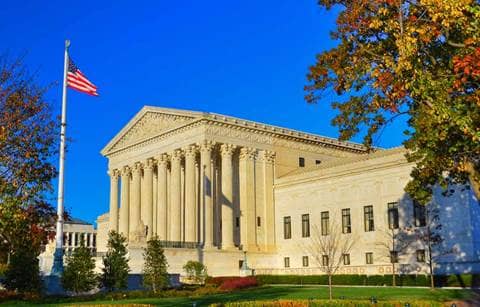With the forthcoming final Section 163(j) code changes, it’s important to understand what international implications these final regulations might have. During this podcast, our international tax experts talk through how GILTI plays a role in the code changes and the benefits this might have on taxpayers, what role the CFC grouping election has in these changes, how to make an election, how FDII comes into play, and what other items taxpayers should consider now as these final regulations are anticipated. Listen now, and find a full transcript below.
Welcome and introduction to the international implications of Section 163(j)
Bill Henson: Hello everyone. I’m Bill Henson. I’m a partner in Plante Moran’s international tax services. I’m here today to talk about the international implications of Section 163(j). It’s a newly changed code section under tax reform, and it does have some international implications. I’m here today with Rob Piwonski from our Macomb office who is our firm in-house expert on the intersection of Section 163(j) and the international tax rules. Rob, thanks for being here today. Hey, I’d like to talk a little bit about how there perhaps might be some benefits in certain cases for 163(j), but at least let’s start off with how 163(j) applies in an international context and then maybe lead into how it might apply and provide benefits to our U.S. taxpayers here in the U.S.
Rob Piwonski: Sure. Thanks, Bill. Again, general concept we have here. It’s 163(j). It really had a large impact on a wide variety of taxpayers. And again, the interest limitation is determined based on a modified EBIDTA formula, or we will use the term “adjusted taxable income” throughout this recording. And so within adjusted taxable income, the GILTI inclusion that taxpayers are recording on their U.S. return is not included within adjusted taxable income. So the GILTI inclusion generally again as a reminder is our new quasi-minimum tax on CFC earnings that we have now as a result of tax reform.
Rob Piwonski: And so, we’re generally seeing rather interactions with foreign tax credit that taxpayers are paying excess tax on these GILTI inclusions. So the reduction from adjusted taxable income for this GILTI inclusion and not being included in your base to determine your interest expense deductibility is really having an impact on taxpayers.
Potential benefits of Section 163(j) changes to taxpayers
Bill Henson: So Rob, as I understand it, there may also be some potential for taxpayers to actually benefit when they are computing their limitation in the U.S. with respect to their U.S. taxable income?
Rob Piwonski: So there’s this concept of... It’s called the CFC grouping election. And so because 163(j) also applies at the CFC level, there is this grouping election that we are seeing in a lot of cases that’s pretty taxpayer-friendly. Of course, as with everything modeling and different situations may apply, but as we think through this grouping election, the general concept is any excess taxable income that is computed in your CFC will generally be able to come up to the U.S. shareholders’ adjusted taxable income and on their U.S. return that will really equalize that subtraction or otherwise getting for the GILTI inclusion.
Rob Piwonski: So the adjusted taxable income from the CFC that’s able to come up an increase or a limitation that is limited to your GILTI inclusion. But again, ultimately we’re seeing this as pretty taxpayer-favorable and gets you into more of a neutral spot. So the scenario is where we’re really seeing this apply for our clients is where they have multiple CFCs, where potentially they have to compute different 163(j) limitation calculations. So for example, if there’s two CFCs under a U.S. shareholder. Then one has interest income from the other CFC; CFC 2 would have interest expense. Under that scenario, CFC 2, from that interest expense on the intercompany loan, would then have potentially an interest expense limitation.
Rob Piwonski: So the idea of this grouping election 1) helps you from your GILTI computation standpoint because it would generally then allow you to aggregate your CFC activity and group the activity. And in order to put yourself in a more favorable limitation perspective, and then potentially reduce your overall GILTI inclusion. And then any excess income that is above the interest limitation base would then go up to the U.S. shareholders 163(j) calc and help them from an adjusted taxable income standpoint offset some of that negative for this new role with the proposed regulations, making that be reduced from the taxpayer’s adjusted taxable income.
Rob Piwonski: The other scenario where we see it potentially is in a tiered structure. So where a U.S. shareholder owns CFCs that are tiered in nature, so a holding company CFC with one or multiple CFCs under it. Under that scenario, you don’t necessarily get the benefit of aggregation, but you do get to tier up access taxable income as I described in the previous example. So again, it takes a little bit of a bite out of this rule from a U.S. tax perspective.
CFC elections and Section 163(j)
Bill Henson: And Rob, as I understand it, the regulations are a little bit funny because the way they’re currently written, maybe this potential benefit isn’t available to taxpayers that only have one CFC.
Rob Piwonski: Yeah, that’s correct. So the way the regulations, the proposed regulations currently read is you need to be a U.S. shareholder in two or more CFCs in order to have a CFC group. So I think that’s an area where we may see further guidance come out, but at least here for the 2019 tax year where the proposed regulations are applicable, you do need to have more than one CFC to have a CFC group and take advantage of this grouping election. So more to come as we get final regulations and determine the applicability date there. But certainly here in 2019, you still do need to have two CFCs in order to take advantage of this.
Bill Henson: So Rob for taxpayers who have gone through the analysis and determined that they can get a benefit for making this election, what’s the process? How do you go about making that election? What are the implications of making an election?
Rob Piwonski: You really are locked by doing and applying the rules within the regulations consistently across your CFC group and then your U.S. tax return and then your 163(j) computation at that level. So there is no additional affirmative election that is required. You just need to make sure you apply the rules and then complete the forms accordingly. Proper way in order to lock that election in. And so where the modeling piece comes in, and it’s really important to evaluate this is once a group election is made, it’s irrevocable. So it will then apply for all years on a go-forward basis.
Bill Henson: That’s great. So basically once you’ve made the selection, you are locked in.
Rob Piwonski: Yes, correct. Completely irrevocable. And so if perhaps you didn’t take advantage of this in 2018, the way the regs are written, you still can apply it here for 2019. So I’ll all of this content, very relevant, if you still think it makes sense to your situation. But yeah, once you make this election and apply it, you really need to be sure that it fits your fact pattern and it makes sense long term.
Bill Henson: And I would point out to our listeners today, the IRS, it seems in a lot of these instances where the tax reform rules at least initially have created some uncertainty, have been allowing for taxpayers to go back and amend in circumstances where maybe they didn’t have all the facts necessary to make an election. So in this case, I would expect that for taxpayers that have one CFC at this point in time, if the IRS were to amend those rules to allow for this to apply in that circumstance that taxpayers could actually go back in time and take advantage of that election, say retroactively.
Other international tax implications of Section 163(j)
Bill Henson: So again, as Robert said, more to learn as the regulations go final. So this is very interesting, Robert. This to me seems to be potential hidden tax attributes that people really to be looking out for in the right circumstances. Are there any other implications that 163(j) has in an international context? Say for example, in terms of ordering rules with other computations based on taxable income like FDII.
Rob Piwonski: Bill, definitely. There is the proposed regulations for FDII and that acronym is foreign-derived intangible income. So that’s ultimately an export-type incentive for product and IP that’s being utilized here in the U.S. by foreign parties. So provides a preferential tax rate to taxpayers on that activity. So the proposed regulations for FDII with 163(j) in mind did acknowledge that there could be circular computations in completing both of these calculations. So again, I think taxpayer-friendly in mind, understanding that as these iterations are being run because both of them drive off of taxable income, you ultimately be stuck with a circular calc unless some kind of adjustment is made.
Rob Piwonski: So the proposed FDII regulations describe ordering the roles in which you would compute FDII on a with and without basis. So you would compute FDII first without the effect of 163(j). Generally, we would see that results in a lower FDII deduction because ultimately taxable income will be lower. That number that you determine on a preliminary basis would then go to your 163(j) computation. That number is the number you reduce adjusted taxable income by in order to determine your interest expense limitation.
Rob Piwonski: So after your interest expense limitation applies, you then rerun FDII and that is ultimately your final deduction that can be reported on the return. So it’s taxpayer-friendly in that it does apply these and acknowledges ordering rules. Perhaps it gets you to a more neutral position, but definitely another good thing in the regulations to generally give taxpayers an equitable result due to interest expense limitations and all of these different computations we have now that are based on taxable income.
Other educational Section 163(j) items and closing
Bill Henson: Well, that’s great. Well, thanks Robert for your time today. I do want to point out to our listeners that there will be a longer and more in-depth webinar on the 163(j) rules as they’re applied to domestic taxpayers shortly. So please look on the Plante Moran website and sign up for that webinar at your convenience. But remember, for those taxpayers that are both subject to these 163(j) rules and actually can take advantage of some of the benefits that Rob talked about earlier today, keep this podcast in mind. And as always, if you ever have any questions, please call your Plante Moran professional and we’re happy to help at any time. Thanks, and have a good day!




